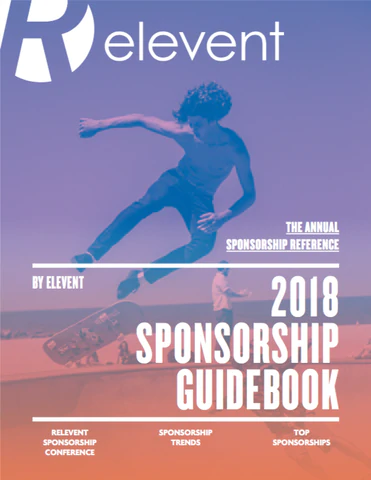
Our ability to predict the future…
For this third edition of our Sponsorship Guidebook, we decided to take a look at our ability to predict trends. Here is an update on our 2015-16 and 2016-17 predictions. To read the previous editions of the Sponsorship Guidebook in full, head to elevent.co to download them for free.
2015-16
| Trend | Changes |
Verdict |
| Digital and tech | Many brands still struggle with digital activation beyond using social networks to push content. Apps are no longer the most popular option and digital has proven costly to maintain compared to mobile sites. But the advantages of a good digital activation are undeniable: Real-time measurement, different ways to engage with fans and a longer time frame to activate. However, digital activations need to go beyond the piecemeal execution that we see so often and align with the overall strategy.
While virtual (VR) and augmented reality (AR) are trending, we see a lot more value in AR, because consumers are not removed from the environment, and it can add value to the overall social experience. Pokémon Go was a great proof of concept. Digital gizmos are still not a substitute to sound sponsorship activation strategies and, in isolation, they remain a tactic. But there are still far too many generic and traditional activations on site. Pop-up tents and beach flags anyone? |
True! |
| Uncharted territories | While we still think that there can be a lot of value for brands when swimming upstream, uncharted territories, supporting less popular properties, has not been a huge phenomenon for lesser known organizations (see Chevrolet in the Top Sponsorship section)
What brands are doing instead is creating their own platforms where they can control everything. Great examples of this are the Chipotle Cultivate Festival or Project Pabst, both of which are extensions of the model made popular by Red Bull. |
Stable |
| Era of co | While there is definitely a momentum for the shared economy, it has not caught on outside crowdfunding platforms.
Some artists have crowdfunded their new albums and sports teams have invited fans to become “sponsors”, but this remains a fringe activity. There may be a tipping point down the road. The most potential comes from online gaming platform where the audience can offer support to a player in order to receive additional or premium content. |
Stable |
| Humanism | You’ll notice from this year’s trends that we hit the mark with this one. Brands with purpose are on the rise.
Cause sponsorship still remains a very small category compared to sports sponsorship. But we have to put this number in perspective, as associating with causes is less expensive than partnering with sports teams, where brands must pay for broadcast visibility. |
Yep. |
| Know your audience | While big data is still a trending topic, most properties have not capitalized on the amount of data they are sitting on.
We need to go deeper in our segmenting and understanding audiences to craft tailored activations. Lots of properties are lagging behind, not even providing partners with basic demographics. |
Correct. |
| Marketing alliances | Too few companies are putting sponsorship at the centre of their marketing strategy, where it can create the most value for a brand and slowly shape a competitive advantage in the market.
A lot of people don’t truly understand the value of sponsorship and, yes, it needs to be measured to show return. But, another possible explanation for fewer alliances is the high turnover in upper management. It requires a lot of time and commitment to build a strong alliance. |
Stable |
| Spontaneous activation | This has become widespread in the market as brands increasingly turn to live streaming and content creation as a way of engaging with consumers.
Spontaneous activations require more agility and less red tape. For live events, the use of war rooms and streamlined approval processes has become popular, where the brand and the agency sit together and post things on the go. |
True! |
| Multi-level Sponsorships | While some brands will stick with single-level partnerships, there is still a lot of value in having assets at different levels of a sport, for instance.
Some argue that stars or individual players are more valuable than teams, but using them in conjunction with each other can help prevent competitors from entering the space and can tackle different sponsorship objectives. |
Yes. |
| Low Rights, High Activation | While this approach can be used in the short term, it is clearly detrimental to building a solid partnership between a property and a sponsor, where value creation needs to be balanced.
Properties have been working hard to add value to partners with turnkey services and, in some instances, they are replacing agencies when it comes to ideation and production. This allows them to generate extra revenue where, in some categories, the rights fees are already maxed out. |
Stable |
| Increased competition | In many organizations, sponsorship budgets are either considered a corporate communication or a branding expense, both of which tend to get cut when things get rough (or expenses needs to be reduced). We’ve rarely seen a major increase in sponsorship budgets for the majority of our clients, and a stable sponsorship budget sometimes means less money for activation because of the hikes in rights fees.
That said, there is a steady flow of new entrants looking for extra revenues out of sponsorship, whether it be small events or non-profits. |
True still. |
2016-17
| Trend | Changes |
Verdict |
| Ephemeral content | With the live feature on Facebook, Twitter video, Snapchat, and now Instagram stories, ephemeral content is hotter than ever.
As outlined in our trend on technology changing the revenue landscape, properties are taking notice and are teaming up directly with social networks to offer alternatives to traditional broadcast and remain relevant to younger demographics and emerging markets. |
YES |
| Content partners | Digital spending is continuing to rise and brands are looking for interesting partnerships to tell their brand stories from a different angle.
However, as influencer marketing becomes more structured, some superstars, like PewDiePie, are becoming brands in themselves, and garnering attention at events and in traditional media. The possible downside of this is that they could end up overshadowing the partnering brand. Finally, amounts awarded to influencers and some popular content platforms for one-offs are completely disconnected from reality and don’t reflect the final outcome. There are ways to measure value and impact. Sponsorship is one of them. |
Yep. |
| Co-branding | Brands are coming together more and more to innovate, like Airbnb recently did with multiple partners.
Brands are also teaming up for sponsorship initiatives, like in the retail environment where a retailer will enter a sponsorship and use pass-through rights for some of the brands that they sell. Finally, properties are getting more involved in bringing their partners together, which can foster great collaboration on co-activation programs. |
Correct. |
| Focus | Big spending brands have found their turf and they are sticking to it. That means less movement in the market. Long-lasting sponsorship programs tend to show positive returns. | Yes. |
| Rights capping | A consequence of the focus trend is that competing brands are fighting less for the same properties and there are fewer bidding wars that can raise right fees.
Inflation and increased budgets on the property side aren’t valid arguments to ask for more money from sponsors. In many sectors, the rights fees are already as high as the market can support. Properties are adopting a cut-and-dice approach to increase revenues: when you’re down to dry and fresh pasta as a category, we say it’s a red flag. Another more interesting avenue for properties to bring in extra revenue is to offer brands added-value services, like an in-house agency with account management, creative and production capabilities. |
True. |
| Measuring data | Sponsorship measurement is still the far west. While some parts of the globe are culturally more inclined to measure sponsorship outcomes, a structured approach is definitely lacking. You can read more on the topic in this year’s measurement issue trend . | Right again! |
| Demographic storm | There is a lot of data to support the fact that an aging demographic doesn’t attend as many events. On the other side of the spectrum, younger crowds don’t tune in to watch the traditional leagues on TV. In the coming years, immigration will also shape how people consume entertainment. | Yep. |

